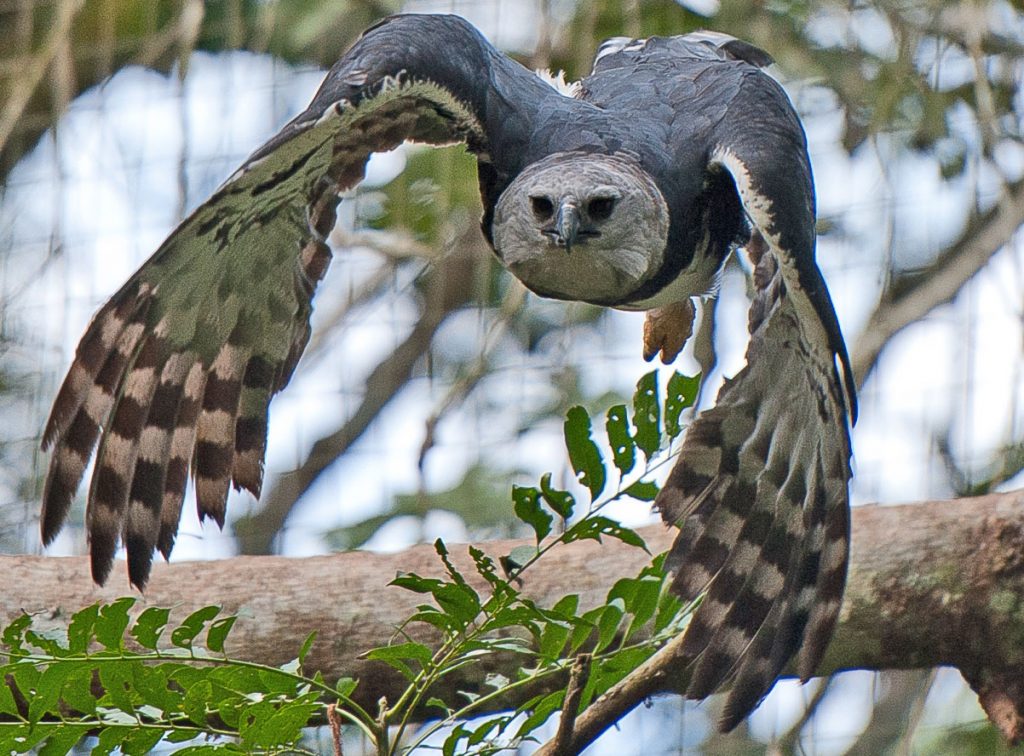
Those that have been reading my reader-directed story Nine of Pentacles know that one of the main characters is a Harpy Eagle by the name of Xipilli, a Nahuatl name which means jeweled prince. Harpy Eagles are a fairly long-lived species of raptor, with a lifespan of around 25-35 years, they are typically unafraid of humans, and they are naturally loyal animals that mate for life. While this trio of traits are what made a Harpy Eagle the right subject for my story, they are not the only interesting traits that I uncovered about these amazing birds of prey during my research.
These majestic raptors are one of the heaviest and longest of the existent species of eagles, exceeded in size only by Steller and Philippine Eagles. Xipilli is a male Harpy Eagle in his middle age, around 12 years old. He would likely weigh around ten or eleven pounds, although he could reach up to thirteen pounds, and be nearly three feet in length. His legs would be thickly muscled, roughly as thick around as a human forearm, and his talons would measure between three and five inches long, giving him the size and strength to pull monkeys and sloths out of the trees.
The males are formidable in size, but they are still dwarfed by their mates. Female Harpy Eagles can weigh up to twenty pounds and reach lengths of three and a half feet.
Like most eagles, this species has exceptional daytime vision and acute hearing. the disk of feathers that border the face of the Harpy Eagle was a practical adaptation rather than a decorative one. It is used to help funnel sound to the raptor’s ears, much like the disc-shaped feathering that surrounds the face of several types of owl.
They also tend to have a shorter wingspan for their size than many other varieties of eagle, giving them an advantage when attempting to maneuver through the trees when they are pursuing prey. Along with sloths and monkeys, these powerful predators also dine on porcupines, anteaters, iguanas, snakes, kinkajous, and several varieties of larger birds, including Macaws and Curassows.
Xipilli is a rescue bird, raised far from his natural habitat and far from others of his species. Had he been raised wild in the jungles of his natural habitat, he likely would have found a mate when he was just four or five years of age. There is no flashy display when these enigmatic birds are courting, but there is loyalty once they have paired off. Harpy Eagles mate for life and they typically produce two eggs once every three to four years throughout their partnership, which they keep in a nest large enough for an adult human to sleep comfortably.
The second egg seems to be for the sole purpose of insurance, however, and once the first egg hatches, the parents ignore the second egg, in most cases allowing the chick inside to perish. The parents focus all of their attention on the first chick, providing both protection and nutrition as they grow. The female stays near the nest to protect the fledgling, which starts out small enough to cup in one hand until they are around four or five months of age, at which time they have almost reached adult size.
The male parent is kept busy hunting not only for himself but also for his mate and his rapidly growing chick. The juvenile bird usually remains with its parents for two to three years after hatching, before moving on to find a mate of their own.
Harpy Eagles naturally inhabit the several areas in Central and South America, and are one of the top predators in these jungles, alongside Jaguars and Anacondas. The trees in these areas were once densely inhabited by this species, but their numbers have been declining due to loss of habitat and predation by humans. Their populations are now listed as near threatened by the International Union for the Conservation of Nature and threatened by CITES.
The Harpy Eagle is the national bird of Panama and enjoys a large population in that country, and several national initiatives in countries like Brazil and Belize are helping this amazing apex predator bounce back from habitat loss.
Fantastic Fauna blog- main menu

